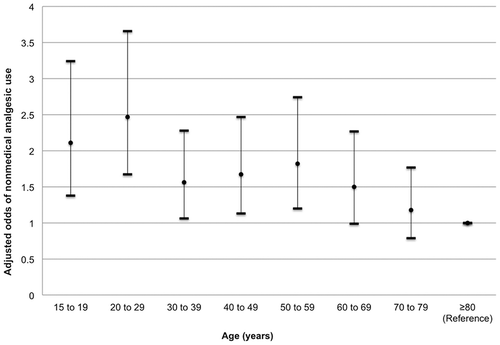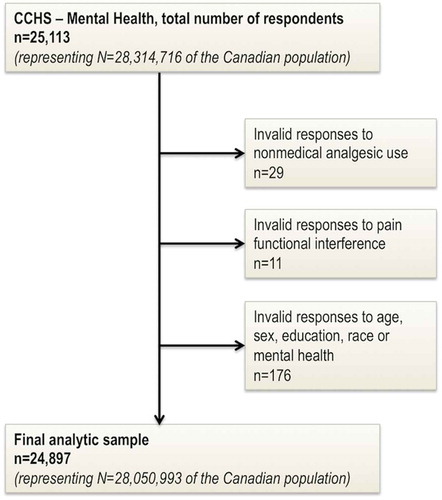Figures & data
Table 1. Weighted estimates of functional pain interference from Canadian Community Health Survey–Mental Health (2012).a
Table 2. Bivariable and multivariable weighteda logistic regression examining the relationship between functional pain interference and NMAU.
Figure 2. Adjusted odds ratios and 95% confidence intervals for nonmedical analgesic use stratified by functional pain interference, controlling for age, sex, highest education completed, culture/race, and chronic mental illness.

Figure 3. Adjusted odds ratios and 95% confidence intervals for nonmedical analgesic use stratified by age, controlling for functional pain interference, sex, highest education completed, culture/race, and chronic mental illness.

Table 3. Weighteda multivariable logistic regression analyses examining the odds of functional pain interference on nonmedical analgesic use, within strata of chronic mental illness and age groupings.

